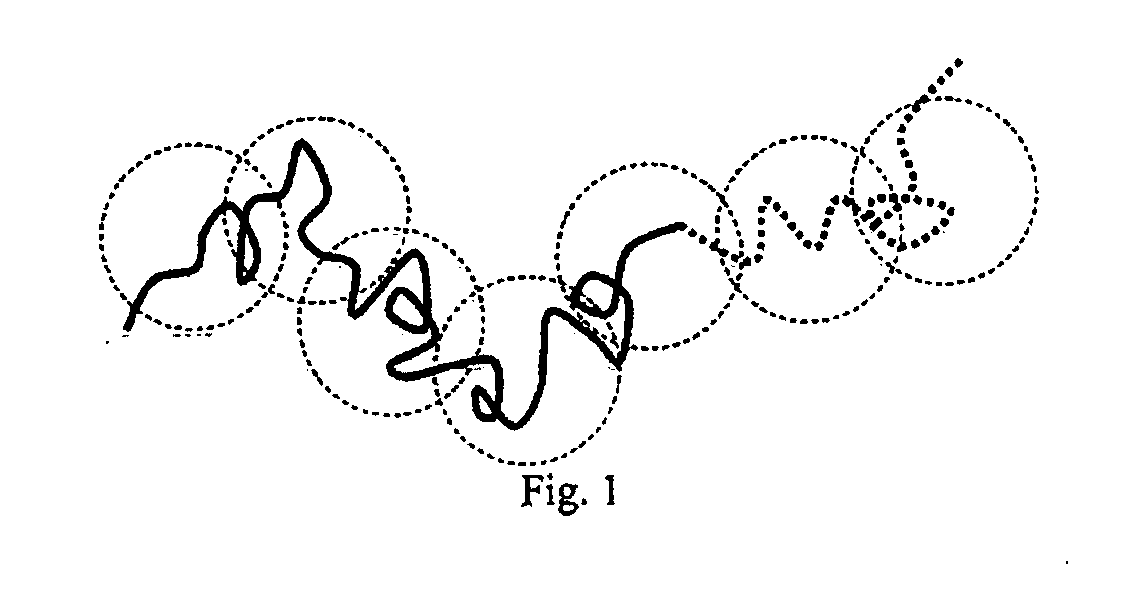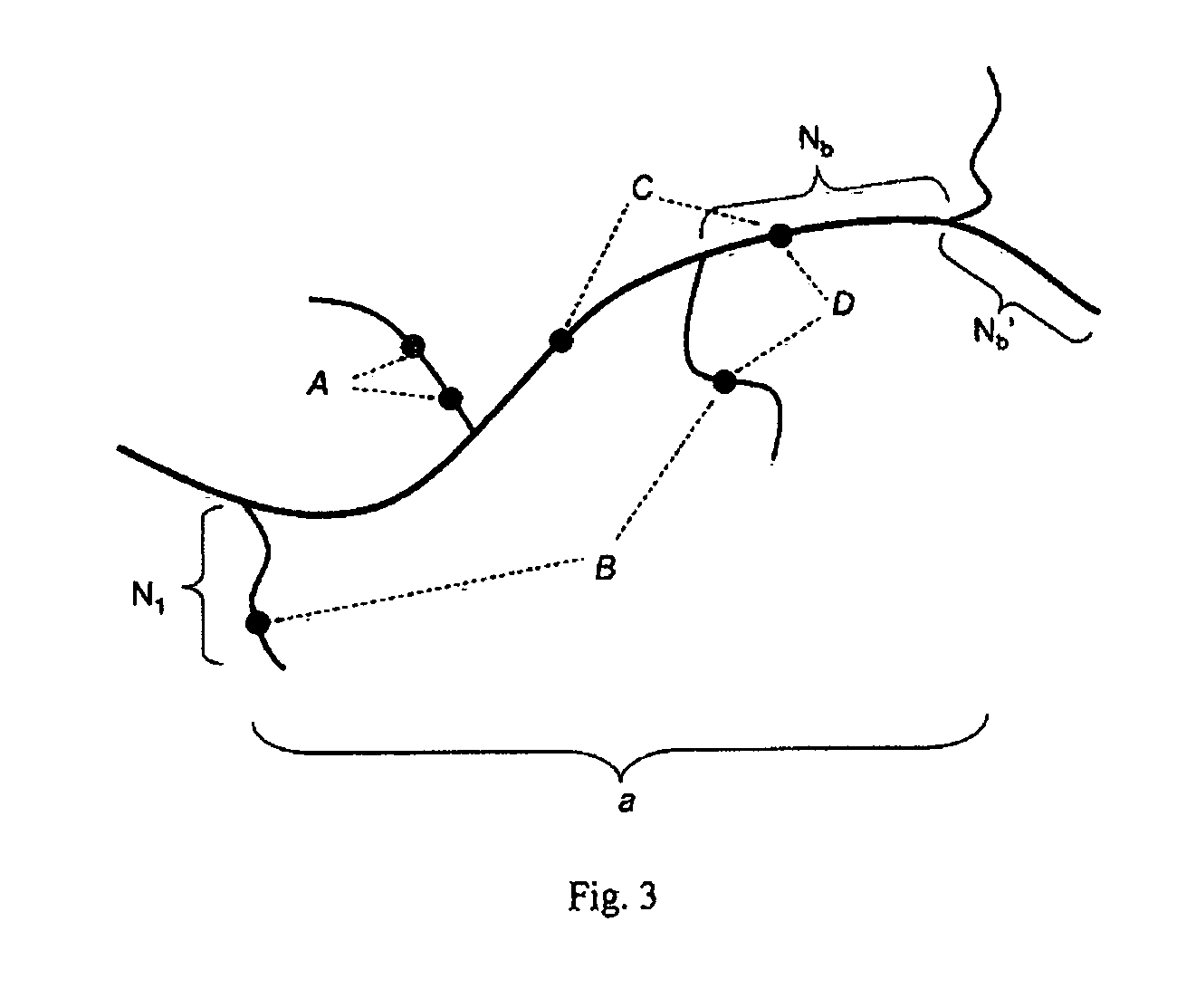Branched polymer lables as drag-tags in free solution electrophoresis
a drag-tag and polymer technology, applied in the field of polymer separation, can solve the problems of poorly understood mechanisms that give rise to relative increases in hydrodynamic drag, and achieve the effect of facilitating separation of end-labeled ssdnas and increasing hydrodynamic friction
- Summary
- Abstract
- Description
- Claims
- Application Information
AI Technical Summary
Benefits of technology
Problems solved by technology
Method used
Image
Examples
example 1
ELFSE for Linear Drag-Tags
[0092] Meagher et al. [2] have recently reviewed the evolution of ELFSE over the last decade, including the theoretical concepts used to analyze experimental data and the technological progress still needed to develop a competitive ELFSE-base sequencing method. Although the exact conformation of the composite ssDNA / drag-tag molecule is in principle important for deriving accurate ELFSE theories, we shall assume in the following that there is no physical segregation of the ssDNA and the label. We shall also assume that the label is not deformed, which means that the hybrid molecule is globally a random coil of effective hydrodynamic blobs. Previous studies indicated that these two assumptions can indeed explain currently available data. For the sake of completeness, we now review the corresponding theoretical arguments.
[0093] The electrophoretic mobility μ of a block copolymer consisting of a linear chain of Mc charged monomers linked to a linear chain of ...
example 2
Experimental Analysis of Linear Drag Tags
[0097] Haynes et al. first measured the electrophoretic migration times of unconjugated “free” DNA and of DNA conjugated to a linear drag-tag with Mu=30 monomers. Using the equations derived in the previous section it is easy to compute the value of a1 (or of the total effective drag coefficient a=a1Mu) from the two elution times thus measured. These authors repeated the experiments using Mc=20 as well as Mc=30 base ssDNA primers (Table 1). We note that both ssDNA molecules give the same result a=7.9 (equivalent to an effective drag coefficient of a1=0.26 per uncharged drag-tag monomer). Equation (2b) can then be used to estimate the Kuhn length of this polymeric drag-tag: with bc=0.43 nm and bKc=3 nm for ssDNA, and bu=0.43 nm (estimated from the chemical structure, see FIG. 2) for the label, we obtain bKu=0.78 nm. This indicates that the label is very flexible: its Kuhn length is about twice its monomer size.
example 3
Experimental Analysis of Branched Drag-tags
[0098] In order to increase the effect of the drag-tag on the resolving power of ELFSE, one must build drag-tags with very large effective friction coefficients. Haynes et al. examined the role that branching could play in this process. To that end, they added branches to their initial Mu=30 linear drag-tag. Using the equations of Example 2, they found that the apparent value of a increases roughly linearly with the molecular size of the branched label and the two ssDNA primers give slightly different values of a (see Table 1). Both of these results are surprising, and in selected embodiments the invention examines the physics that is relevant in the case of branched drag-tags.
TABLE 1Experimental data for the linear (acetylated) and branched labels.The experimental value of the drag-tag effective friction coefficientα was obtained using the theory for linear labels presentedin Section 2 (Reproduced from Haynes et al.).20 base DNA30 base ...
PUM
| Property | Measurement | Unit |
|---|---|---|
| Volume | aaaaa | aaaaa |
| Volume | aaaaa | aaaaa |
| Volume | aaaaa | aaaaa |
Abstract
Description
Claims
Application Information
 Login to View More
Login to View More - R&D
- Intellectual Property
- Life Sciences
- Materials
- Tech Scout
- Unparalleled Data Quality
- Higher Quality Content
- 60% Fewer Hallucinations
Browse by: Latest US Patents, China's latest patents, Technical Efficacy Thesaurus, Application Domain, Technology Topic, Popular Technical Reports.
© 2025 PatSnap. All rights reserved.Legal|Privacy policy|Modern Slavery Act Transparency Statement|Sitemap|About US| Contact US: help@patsnap.com



